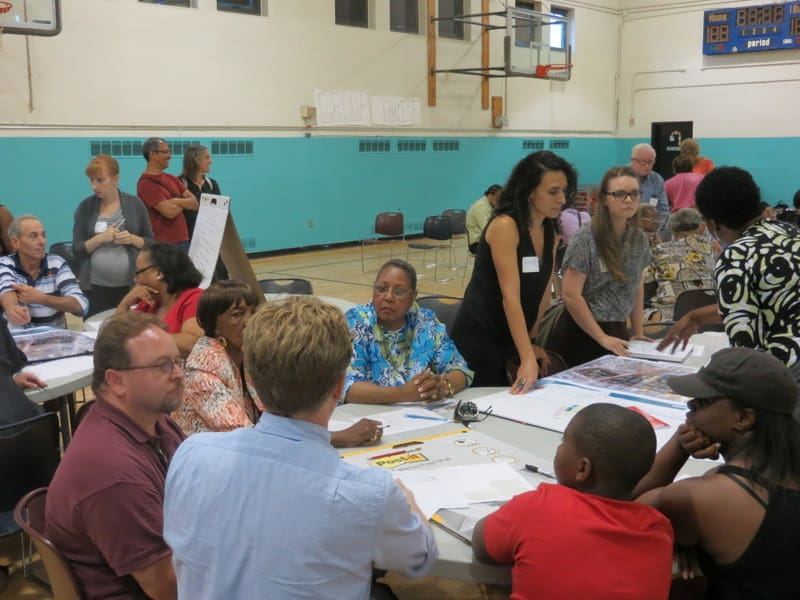In the five years that we have been publishing the Star-Revue, we have been to countless meetings where beleaguered public housing tenants have pointed out, complained, and begged to have their living conditions improved.

From mold, to poor lighting, to cracks in walls, to broken refrigerators and rotting kitchen cabinets, broken mailboxes and front door locks, we’ve heard it all.
And guess what – it didn’t cost us a penny to find this information out. All we did was to keep our ears open at meetings and to people explaining to us the conditions they had to live in.
And before you think that this is OK – that living in public housing is a free ride – understand that NYCHA is very strict about collecting the rent – sending out eviction notices regularly. Tenants pay 30% of their GROSS income for the rent. In the old days, before NYC declared $1900 monthly rents to be “affordable,” this was considered the norm for all of us.
Another way for the average simpleton to understand the problems that public housing tenants face was to pay attention to the campaign speeches of the current mayor. Or to read Scott Stringer’s reports. Or to ask any Tenant Association president. Or to read the Daily News.

For some reason, NYCHA has decided that none of these methods is enough to understand the needs of their tenants. Instead, they decided to hire a trio of high-priced international consultants to hold an inane meeting at the Miccio Center, wasting our time and the city’s money to find out nothing new.
Kohn, Pederson, Fox is an international design firm that builds projects in places such as Malaysia, China and South Africa. They publish a glossy annual report that defines them as “an independent firm of planners, designers, engineers and consultants working across the built environment.”
ARUP is the second consultant. Their annual revenue is quoted in billions of British pounds. The third consultant for this project is OLIN. They are yet another global company. They are an architecture and design firm with government contracts throughout the US and Europe.

These companies sent out a slew of youngish looking employees to facilitate what was billed as “The Red Hook Houses Community Workshop.” Posters were put up all over the Houses and quite a number of curious residents came out to the meeting, which was held at the Miccio Center on a hot summer evening last July 21st.
In the old days, community meetings meetings meant that the people holding the meeting would sit or stand in front of an audience, with everyone being offered a chance to speak in front of the group.
These are the new days. Instead of allowing people to let everyone know what they think (which was once an important part of the democratic process), people are herded into many small groups. This not only keeps the meetings lashed to a pre-arranged script, but also gives work for more “facilitators.”
Each consultant follows the pre-arranged script in order to come up with a report containing mostly useless information that probably could have been written without having a meeting at all. However, these meetings are very profitable for the facilitators, so they must do this.
The inane questions asked that night included things like: “Do you use the outdoor areas of the Red Hook Houses? If so, which ones.” And: “is there adequate parking around your building?” And: “what do you like most about the open space around your home.”

An answer to the last question, as illustrated in the photo at the beginning of this editorial was “I Like Grass and Trees.”
We asked a woman after the meeting why they came to the meeting and what they thought of it. She told us that she came out of curiousity but would never waste her time again.
As she said this, some of the facilitators could be seen leaving the Miccio in a shiny black Uber mini-van, no doubt returning to their shiny glass walled Manhattan offices to write up their report, letting NYCHA know that their tenants like green grass and don’t like being held up at night. For this they are paid handsomely, being the international consultants that they are.
And then NYCHA has the nerve to complain about not having enough money to fix cracks in the walls.









2 Comments
BULLSEYE GEORGE…
I RESULT AND AGREE WITH YOUR ANALYSIS. ..
THANK YOU
Not my analysis – that’s what everybody (including you) was saying afterwards. They ought to be paying us for giving them work to do! Or maybe they should just use common sense and hire someone to make sure the repairs are done properly, and come to a TA meeting like everyone else and see what improvements people are asking for. Or, like I said, read the Daily News.